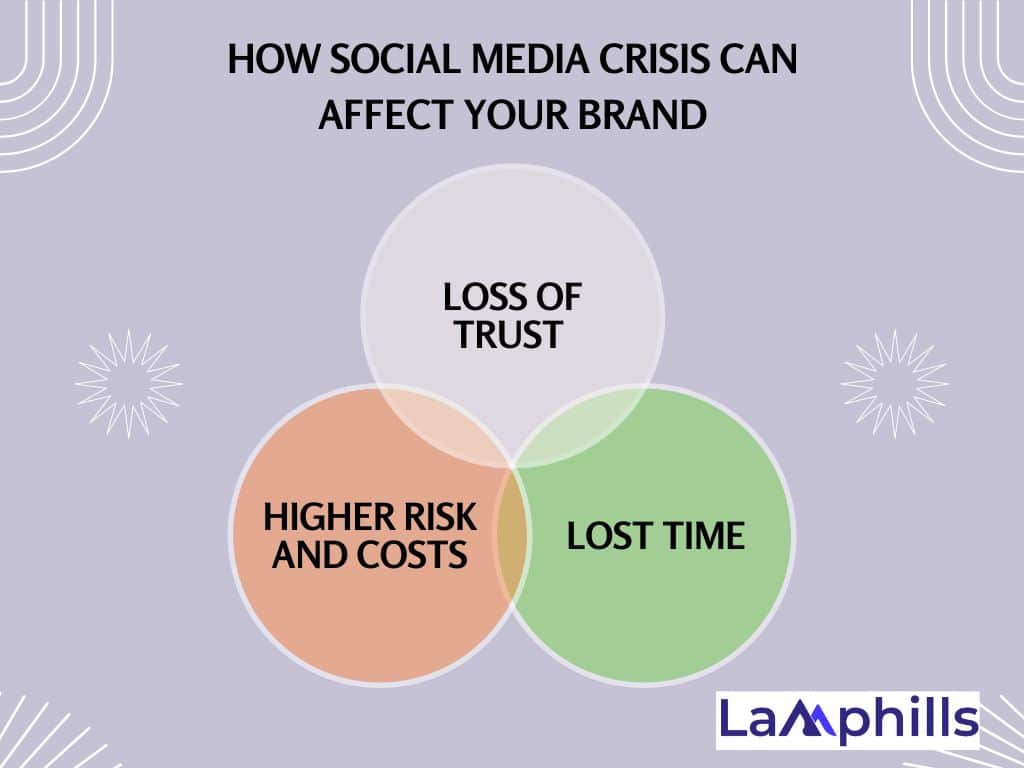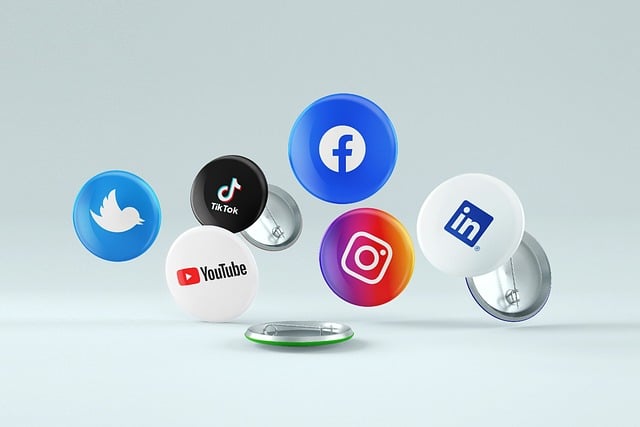Social media crisis happen more often than you might think. If you work on the social media team for a well-known brand, you’ve probably already dealt with some of these issues.
Think about popular brands like H&M, United Airlines, Burger King, and Starbucks, which have all faced big social media problems. How do they handle these situations? They have a plan in place to quickly spot and fix the problem.
I remember the first time I faced a social media crisis. It was a quiet evening, and I was catching up on work when our brand’s Twitter blew up. At first, I thought, “Great, more engagement!” But as I opened the app, I saw dozens of negative comments about a recent campaign that people found offensive. It hit me hard. I felt a wave of anxiety and panic, the kind that makes your stomach twist. My brand was in trouble, and I needed to act quickly.
Since then, I’ve learned that dealing with negative comments on social media needs more than just a fast response. It takes a smart plan, staying calm, and finding ways to turn a bad situation into a chance to learn.
In this article, we’ll share some proven strategies for handling social media challenges, protecting your brand’s reputation, and maintaining customer trust. Let’s begin.
Key Points.
- A social media crisis occurs when negative comments or events gain significant attention and damage a brand’s reputation.
- A well-structured team with clear roles is essential for managing a crisis.
- Brands must respond swiftly and transparently in a crisis.
- Ignoring or delaying a response can worsen the situation, so it’s crucial to acknowledge the issue, provide clear communication, and take corrective actions promptly.
- Social listening tools help detect potential problems early by monitoring brand mentions and audience sentiment.
- During a crisis, pausing any scheduled posts or marketing campaigns is important.
Understanding a Social Media Crisis
A social media crisis is a big, unexpected problem on social media that hurts a company’s reputation. It can happen for different reasons, like customer complaints, scandals, false information, or public anger.
For example, when Pepsi released a commercial featuring Kendall Jenner, many people felt it downplayed serious social issues like protests. The backlash was so intense that Pepsi had to pull the ad and apologize publicly.
Note: Not every negative comment or complaint on social media is a crisis. Everyday issues, unrelated events, or personal opinions that don’t spread widely shouldn’t be confused with a crisis. However, when negative comments grow quickly, get a lot of attention, or damage a brand’s reputation, it becomes a crisis that needs to be dealt with immediately.
Having a good plan for managing a social media crisis can help quickly send the right messages to deal with the situation. From handling negative comments to losing followers, it’s important to have a strong crisis communication plan ready to go.
What are the benefits of social media in managing a crisis?
Social media plays a big role in shaping how people see your brand, sometimes in good ways and sometimes in bad. It can also be a powerful way to fix communication problems during a crisis.
Here’s how social media helps your audience connect with your brand and rebuild lost trust.
- Social media lets brands share quick updates with their audience in real time.
- Help people by providing useful information and support during a crisis.
- Learn what your audience expects and watch for things that might cause negative reactions or criticism.
How can a social media crisis affect your brand?

If a social media crisis isn’t handled well, it can hurt your brand’s reputation, sales, and profits. You might already know about the direct effects, but the indirect effects can also be harmful.
Here are three problems you might face if your brand goes through a social media crisis:
- Loss of Trust from Stakeholders: Brands can’t earn trust if they don’t understand their responsibilities during a crisis. Stakeholders need to feel confident that a brand is acting in their best interests, not just its own. If stakeholders believe the brand doesn’t have a strong plan for managing a crisis and its unintended effects, they may quickly pull back their support.
- Higher Risk and Costs: A social media crisis can hit hard in two ways: it damages how customers see your brand and hurts your finances. Brands dealing with a crisis often face unexpected costs, such as hiring extra PR help or paying high legal and settlement fees.
- Lost Time: During a crisis, every second matters because your brand’s reputation is at risk. However, you may get stuck spending too much time writing social media posts, figuring out approvals, and fighting off angry customers on different platforms.
The time and effort spent managing the crisis could have been used for more creative projects, launching new ideas, or improving customer service. Unfortunately, when you’re deep in crisis management, it’s easy to get stuck and forget the bigger goals.
Social media marketers put a lot of time and effort into making and planning posts, listening to what people say, and watching how users interact with their content. However, every social media plan must include a way to handle problems.
We understand that managing social media can be stressful at times. That’s why we’ve provided some easy steps to handle it effectively.
Ways to Handle a Social Media Crisis Effectively
When dealing with a social media crisis, it’s important to stay calm and take the right steps to manage the situation. Here are some simple measures you can follow to handle a social media crisis effectively:
#1. Set Up a Social Media Crisis Management Team
Dealing with a social media crisis can be stressful. The last thing you want is for your team to be confused about who is responsible for what. It’s important to create a strong team with clear roles to manage the crisis.
Make sure everyone knows their job, whether it’s responding on social media, handling internal communication, or managing public relations. This will reduce confusion and make the process smoother.
You’ll need a crisis team leader to organize the responses, make important decisions, and get the plan approved by company leaders. Social media managers and team members should be given other tasks, like monitoring social media and managing the project.
You may also need help from technical experts, like IT or security professionals, to fix any specific problems and manage the technology.
If there’s a legal issue, make sure you have a legal advisor to guide you and approve your public messages. Depending on your business and the type of crisis, you might want to involve other departments or roles.
Finally, make sure to include contact details for each team member, their responsibilities, and backups in case someone is unavailable.
#2. Decide on Your Communication Plan and Key Actions
Words are important, but actions are even more powerful. Once you’ve acknowledged the feedback, it’s time to show what you’re going to do about it. If the situation calls for it, take corrective action and communicate that to your audience.
When a crisis hits, the first place you’ll communicate is on your social media. But what if the problem affects your entire online presence?
It’s important to think about other ways to communicate so you can reach all your customers, even those who don’t follow you on social media or check your pages often. If things get worse or you need to give more attention to certain social media users, it’s a good idea to take the conversation to a more private place, like email.
Using a good newsletter app allows you to send emails to your audience, explaining the problem and how you’re working to fix it. A personalized email shows your customers that you’re listening and actively solving the issue.
You could also choose to send private messages or make phone calls, depending on your type of business.
Simply deleting posts or responding to negative comments won’t be enough if the situation gets out of hand. You might need to make bigger changes, like updating your website or online ads.
Also, don’t forget about internal communication. Make sure everyone involved in your business knows what’s happening and how the brand is responding to the crisis. More on that part later.
Here is a simple template for a Crisis Communication Plan that your organization can use. This template will help you handle a social media crisis by keeping your response organized, making sure your communication is clear, and protecting your brand’s reputation.
You can adjust it to match your team’s setup and specific needs so you can deal with any unexpected problems quickly and effectively.
#3. Respond Quickly and Appropriately
One thing I’ve learned from handling multiple crises is that people don’t expect you to be perfect. They expect you to be honest. Acknowledge the issue publicly as soon as possible.
When brands face a social media crisis, some try to ignore it, hoping it will go away. But like most problems in life, ignoring it won’t solve anything.
The worst thing you can do is wait and let the situation get worse, which can hurt your public image and brand reputation. You need to act fast to show that you’re aware of the problem and working on a solution.
Companies that don’t respond quickly can seem uncaring—or even worse like they’re hiding something.
It’s always better to respond as soon as possible. Prepare some basic responses in advance, so you can quickly acknowledge the issue when it happens. Having pre-made templates ready will save time, and you can adjust them to fit the situation.
Even if you don’t have all the details yet, responding quickly gives you time to understand the problem and plan a more detailed response later. A good first step is to take down any content that might be offensive or causing the issue.
Again, don’t delete negative comments unless they are abusive. Deleting feedback makes it look like you’re hiding something, which can fuel the fire and make the situation worse.
In many cases, a sincere apology is needed to calm people down.
For example, when Pepsi released a commercial featuring Kendall Jenner that was meant to show unity but came across as tone-deaf to serious social issues, it sparked a huge backlash. People felt the ad made light of important protests.
Pepsi quickly pulled the ad, apologized, and acknowledged their mistake. Their fast response and apology helped them manage the situation before it got worse.
#4. Use Social Listening to Catch Problems Early
In the middle of a crisis, you need detailed information to stop things from getting worse and make a good plan. This is why using a strong social listening tool, like Mention, is important. It helps you spot problems early before they grow bigger.
With a tool like this, you can see if there’s a sudden increase in social media activity about your business or if potential problems are starting to appear.
It’s also important to monitor how people feel about your brand on social media. This is called tracking sentiment, and it shows whether users have positive or negative feelings towards your business.
Set up alerts to notice any changes in how your audience feels and keep track of keywords and hashtags connected to your brand.
Even if you’re already managing the crisis, not paying attention to how users feel could make you miss important details about the situation’s impact.
For example, in 2018, H&M faced a major backlash when an image on its website showed an African-American child wearing a sweatshirt with the phrase “Coolest monkey in the jungle.” If H&M hadn’t been paying attention to social media sentiment, they might not have noticed the strong criticism. Many people found the image offensive and even called for a boycott. In response, H&M issued an apology, removed the ad, and stopped selling the hoodie worldwide.
#5. Pause Upcoming Campaigns
You might have planned a big social media product launch, but posting during a social media crisis is the worst time. Even though it’s not great for your marketing plan, pausing is the right thing to do.
Posting as if everything is normal can make the crisis worse. Now is the time to recognize the problem and think carefully before sharing anything.
If you keep posting, your audience might think you are ignoring the issue. Pausing all scheduled posts shows that you care about your customers’ concerns and are sensitive to the situation.
Being careful and appropriate in your communication during tough times is key to rebuilding trust with your followers.
Also, consider pausing any email campaigns you have planned. Check the content on your website, like your homepage or blog, to make sure there’s nothing offensive or insensitive.
Once the crisis is over, review your future posts. If any of them seem out of touch or inappropriate, don’t hesitate to remove them from your schedule.
An example of poor crisis management is when United Airlines forcibly removed a passenger from an overbooked flight in 2017. The video of the incident went viral, and instead of pausing their scheduled posts, United continued with their regular updates. This made people think the airline didn’t care about the incident, which hurt its reputation even more.
#6. Don’t Ignore Internal Communication
We know that sending out clear messages to the public is important during a social media crisis, but ignoring internal communication is a common mistake. It’s crucial to keep your employees and partners informed about what’s happening and how the brand is handling the issue.
Your team deserves to know the situation and the steps you’re taking to fix it. You already have enough to deal with outside rumors, so it’s important to stop any misinformation from spreading among your employees, their contacts, or your customers.
Be clear about your plan and try to ease any worries within your team. Make sure everyone knows what they should or shouldn’t say and how to say it. This will help everyone stay on the same page and support a unified message.
It’s especially important to prepare your customer service team with the right tools and information. They are the ones directly interacting with your customers, so they need to clearly understand what to do and say to handle the situation well.
#7. Always Take the High Road
One of the best things about social media is that you can be real and honest with your audience. Once you recognize a social media crisis, it’s time to give them a clear and sincere response that shows you’re taking responsibility.
People tend to lose trust when brands try to blame others during a crisis. Share your feelings, stay calm in tough conversations, and don’t take things personally.
When apologizing, simply say, “We are truly sorry.” Avoid using “but” in your apology, as it can seem like you’re avoiding responsibility. Admit any mistakes and explain what steps you’ll take to improve in the future.
You might get negative reviews or angry comments on social media. Some people just want to argue, so stay calm, focus on the facts, and don’t let it get emotional.
If it feels right, you can add humor, but be careful not to direct it to your customers.
A good example is when Dove posted an ad in 2017 that showed a Black woman turning into a white woman after using their soap. People found this offensive, and the ad received a lot of backlash. Dove quickly realized their mistake, apologized without making excuses, and took down the ad. They admitted they were wrong and promised to be more thoughtful in the future, which helped them regain some trust.
#8. Monitor the Situation and Keep Learning
Once the initial crisis is addressed, don’t forget to keep monitoring the situation. Negative feedback can resurface, and you need to be ready. I regularly check the conversations happening on our social media platforms to see if any issues are still being discussed. It’s important to follow up and continue addressing concerns, even after the storm has passed.
Every crisis is a learning opportunity. After each incident, my team and I conduct a post-crisis analysis. We look at what worked, what didn’t, and how we can do better next time. The more you learn, the better prepared you’ll be for future crises.
#9. Review Your Social Media Guidelines

Image by Biljana Jovanovic from Pixabay
One good thing about a social media crisis, no matter how big, is that it can help you improve. Every lesson you learn is a chance to build better relationships with customers, improve communication, and understand how to prevent future problems.
Now is the time to think about what went well and what didn’t in your crisis management and share these lessons with different teams in your company.
What many companies forget is that the effects of a crisis may show up later. For example, you might notice a drop in sales or lose some loyal customers.
The key is to keep an eye on how people feel about your brand in real-time and use your data to see how well your crisis management worked.
Create reports that track key metrics, like shares and comments, and look closely at where and how the crisis started. Get feedback from different teams.
Also, don’t forget to monitor internal data, like how quickly important questions were answered, to find any areas that need improvement.
To avoid another social media crisis, it’s important to have a clear and strong social media policy. Here are some guidelines to think about:
- How should employees talk about your business on their social media and in other public conversations?
- What is your brand’s tone, and how can everyone use it in their posts?
- When should your team move a conversation to a private message?
- Do other team members need access to social media accounts, passwords, or other tools in case of an emergency?
- Are your employees aware of copyright rules and how to properly credit content?
Final Thoughts
The truth is a social media crisis can happen to any brand, no matter how big or small or how long they’ve been in business. That’s why it’s important to have a crisis management plan, prepare your response carefully, and manage all communication, both inside and outside the company, properly.
Though handling negative feedback on social media can be stressful, it’s also a chance to show that your brand is real, honest, and dedicated to getting better. In my experience, every crisis is an opportunity to strengthen your connection with your audience.
When you have good strategies and the right tools in place, it’s easier to stay calm during a crisis.
So, the next time you face a social media crisis, remember to stay calm, be honest, take action, talk with your audience, and keep learning from the experience. Negative feedback doesn’t have to hurt your brand. If you handle it well, it can actually make your brand stronger.
Bonus Answers to FAQs.
What is Social Media Crisis Management?
Social media crisis management is a plan to reduce the damage caused by negative messages spreading about a brand on social media. For example, when a CEO posts a public apology or explanation after a problem comes up, that is part of the brand’s strategy to handle a social media crisis.
What is an example of a social crisis?
A social crisis can be caused by things like war, people being unhappy with their government, economic problems, natural disasters like floods and hurricanes, or the spread of a disease.
What are the three types of crisis management?
1. Responsive Crisis Management: This is when you respond to a crisis that has already happened and try to manage the situation.
2. Proactive Crisis Management: This is when you plan ahead to prevent a crisis before it happens by preparing strategies and solutions.
3. Recovery Crisis Management: This is when you work on fixing the damage after a crisis, helping your business or brand recover and move forward.
What are the causes of a social crisis?
A ‘social crisis’ is a situation where there is extreme poverty, unfair treatment of people, violations of human rights, discrimination, and unequal access to important resources worldwide.
What is the main goal of crisis management on social media?
A good social media crisis plan helps your brand by:
– Preventing damage to your brand’s reputation, both short-term and long-term.
– Bringing back calm and stability.
What are the 5 P’s of Social Media?
The 5 P’s of marketing are important when using social media as part of your overall marketing strategy. Social media is just one piece of your marketing plan. The 5 P’s to keep in mind are:
1. Product: What you’re selling.
2. Price: How much you’re charging for it.
3. Place: Where you’re selling it, whether online or in stores.
4. Promotion: How you’re advertising it, including on social media.
5. Packaging: How your product looks and is presented to customers.
These help guide your approach when using social media in marketing.
Similar Articles
How to Create an Effective Crisis Management Team: 6 Key Steps
Social Media Community Management: A Complete Guide
Everything You Need to Know about Social Media Intelligence






